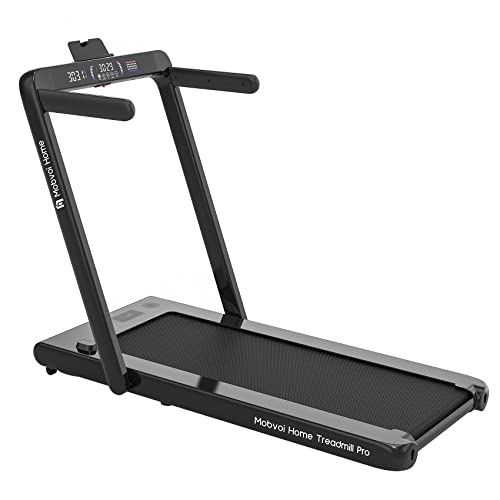7 Little Changes That'll Make A Huge Difference In Your Treadmill…
페이지 정보
작성자 Fleta Duncombe 작성일25-11-03 07:40 조회8회본문
Treadmill Non-Electric: The Eco-Friendly Fitness Solution
In a period controlled by electric devices and state-of-the-art gizmos, the simple non-electric Treadmill Non Electric stands apart as a beacon of simplicity and performance. Typically eclipsed by their modern counterparts, non-electric treadmills provide various advantages that cater to a sustainable way of life and a solid exercise. This blog site post will check out the benefits, performance, and variety of Non Motorised Treadmill Uk-electric treadmills, making a strong case for their role in modern-day physical fitness regimens.

What is a Non-Electric Treadmill?
A non-electric treadmill, also called a manual Treadmill Without Electricity, runs without electric power. Instead, it counts on the user's energy to move the belt. This type of treadmill usually has a curved or flat running surface area and a belt that moves as the user walks or runs, consequently offering a full-body cardiovascular workout.

Key Features of Non-Electric Treadmills
| Feature | Description |
|---|---|
| Power Source | Manual operation (user-powered) |
| Design | Curved or flat Treadmill Manual surface |
| Mobility | Usually light-weight and simple to move |
| Toughness | Less mechanical elements; often made from premium materials |
| Cost | Normally more cost effective than electric treadmills |
| Footprint | Generally smaller sized, making them appropriate for limited spaces |
| Noise Level | Quieter operation compared to electric variations |
The Advantages of Non-Electric Treadmills
1. Eco-Friendly
Non-electric treadmills are a sustainable choice for physical fitness lovers. Without any electricity intake, they decrease carbon footprints and total energy intake.
2. Economical
With fewer mechanical elements and no wiring systems, non-electric treadmills are normally more economical. This makes them available and attractive to individuals looking to preserve a healthy lifestyle without breaking the bank.
3. Increased Workout Intensity
Since the user powers the belt, they have full control over their exercise's intensity. The more difficult you press, the more calories you burn. This self-powered function motivates a more engaged exercise, pushing limitations for a better physical fitness result.
4. Compact and Portable Design
Most non-electric treadmills have a light-weight construction and smaller sized footprint, making them simple to store and transport. This feature permits users to integrate cardio exercises into various settings, whether in your home, in the workplace, or at a gym.
5. Lower Maintenance
Non-electric treadmills have fewer moving parts than electric variations, which equates to decrease upkeep expenses and fewer mechanical failures over time.
Kinds Of Non-Electric Treadmills
Non-electric treadmills can be found in different styles to deal with varied fitness needs. Here's a short summary:
| Type | Description |
|---|---|
| Curved Manual Treadmill | Functions a curved running surface area for a natural gait. Outstanding for running and interval exercises. |
| Flat Manual Treadmill | A simple style comparable to standard treadmills however powered by the user's movement. |
| Foldable Manual Treadmill | Compact design that can be easily folded and saved away when not in use. Perfect for small home. |
| All-Terrain Manual Treadmill | Developed for outside use, these treadmills typically include a rugged develop and traction control. |
Often Asked Questions (FAQ)
1. Are non-electric treadmills ideal for beginners?
Yes, non-electric treadmills can be suitable for novices. Users can change the strength and speed of their exercises based on their fitness level.
2. Can I use a non-electric treadmill for running?
Absolutely! Many non-electric treadmills, particularly curved designs, are designed for running. Their self-powered nature permits users to take part in jogging or sprinting.
3. What kinds of exercises can I carry out on a non-electric treadmill?
Users can take part in various workouts, including walking, jogging, running, interval training, and even hill workouts by adjusting their position.
4. How do I preserve a non-electric treadmill?
Basic maintenance includes regularly inspecting the belt for wear, ensuring it is focused, and cleaning up the surface to avoid debris from affecting motion.
5. Are non-electric treadmills loud?
Non-electric treadmills tend to be quieter than electric ones, as they do not have motors that can develop sound. Users may still generate noise based upon their speed and weight.
Tips for Maximizing Your Non-Electric Treadmill Workouts
To get the most out of your non-electric treadmill sessions, consider the following tips:
Warm-Up Properly: Always begin with a warm-up session to prepare your body for the exercise.
Integrate Interval Training: Alternate in between high-intensity sprints and moderate walking to improve calorie burn and enhance endurance.
Focus on Form: Maintain proper posture and kind while running to minimize the risk of injury.
Hydration is Key: Keep water close-by to stay hydrated during your exercises.
Track Your Progress: Use a fitness tracker or smart device to monitor your exercise performance and progress with time.
The non-electric treadmill stands out as a long-lasting, eco-friendly piece of workout devices that successfully deals with both newbies and experienced physical fitness lovers. With its plethora of benefits, consisting of cost-effectiveness, ease of usage, and mobility, it provides a sustainable option in the progressing fitness landscape. For those wanting to streamline their workouts while welcoming an active way of life, non-electric treadmills could be the ideal service. It's time to redefine your exercise experience far from the diversions of innovation and toward the fundamentals that keep you fit and healthy!























 Home
Home  고객센터
고객센터 




